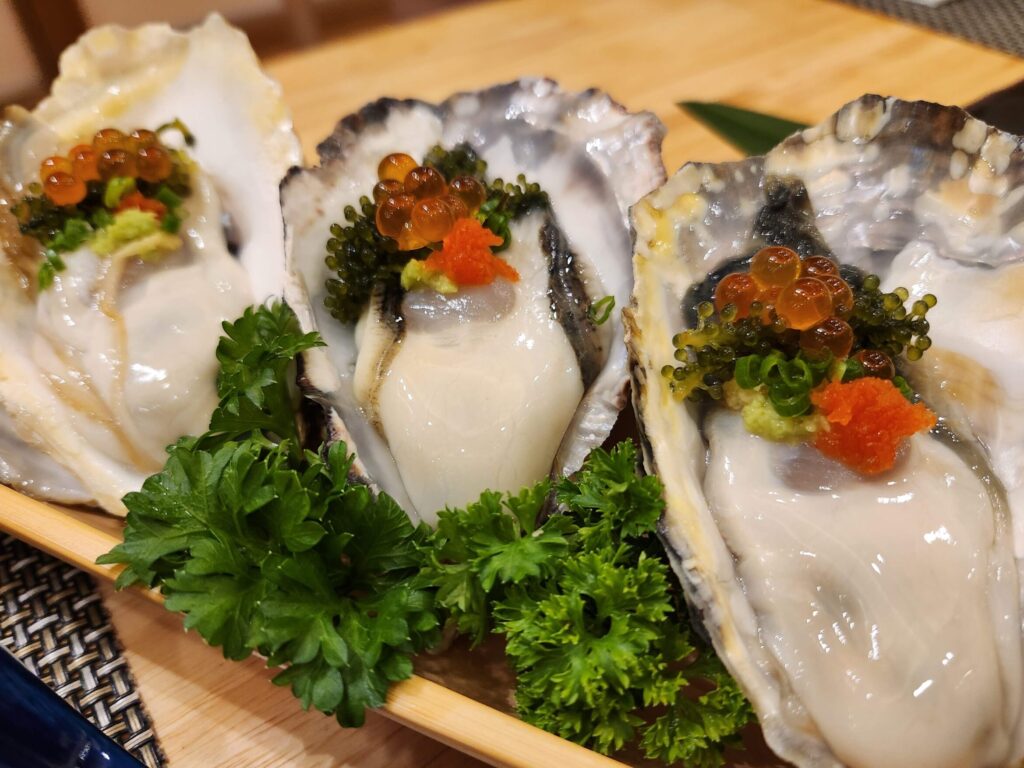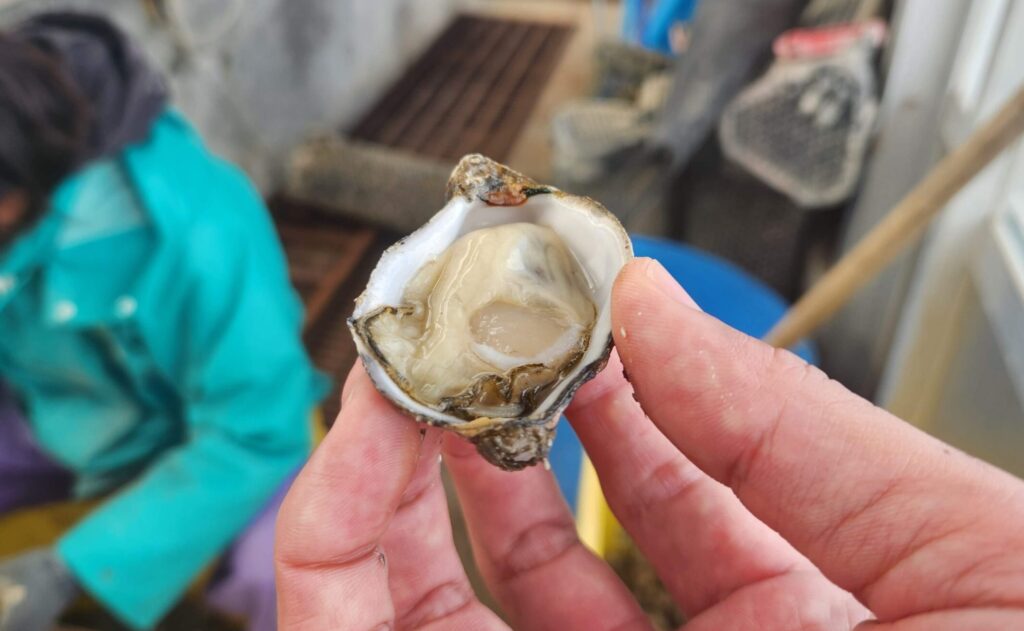
Japanese oysters are gaining increasing attention in the global culinary scene. Cultivated in pristine natural environments with advanced aquaculture techniques, Japanese oysters are highly valued by chefs and food enthusiasts worldwide for their superior quality and exceptional flavor. In recent years, exports have accelerated, opening new markets. This article explores the characteristics of Japanese oysters, their growing popularity overseas, and future prospects.
The Appeal of Japanese Oysters
Japan is one of the world’s leading oyster-producing countries, with an annual production volume of approximately 150,000 tons (For reference: France produces about 130,000 tons, and South Korea about 300,000 tons). Hiroshima and Miyagi Prefectures are the largest production areas in Japan, playing a crucial role in the nation’s oyster industry.
In recent years, the export of Japanese oysters has expanded rapidly. According to the Ministry of Agriculture, Forestry, and Fisheries, the export value of Japanese oysters reached approximately $195 million in 2021, more than tripling compared to 2017. Additionally, in 2024, the total export value of Japanese agricultural, forestry, and fishery products reached $9.7 billion, a 3.7% increase from the previous year, marking the 12th consecutive year of record-breaking exports. This remarkable growth is solidifying the presence of Japanese oysters in the global market.
One of the reasons Japanese oysters are highly regarded overseas is their outstanding quality. Compared to oysters from other countries, Japanese oysters tend to be larger and have plumper meat inside the shell. The nutrient-rich coastal waters of Japan allow oysters to grow quickly, resulting in a plump texture and rich umami flavor.
Moreover, Japan’s aquaculture technology is among the highest in the world, with strict safety controls in place. For raw consumption, oysters undergo purification treatments using dedicated cleansing tanks, ensuring that only those meeting stringent hygiene standards reach the market. This rigorous quality management ensures that Japanese oysters are recognized globally as a safe and premium seafood product.
Why Japanese Oysters Are Popular Overseas
In the global market, French oysters are considered the gold standard due to their long-standing reputation and branding. However, French oysters are expensive and typically served in high-end restaurants. In contrast, Japanese oysters offer a high-quality yet cost-effective alternative, which has fueled their increasing demand worldwide.
Additionally, most Japanese oysters are exported using frozen containers. Thanks to Japan’s advanced freezing technology, frozen oysters maintain nearly the same quality as fresh ones, with minimal differences in texture and flavor. This innovation has made it possible to supply Japanese oysters to a broader international market, enhancing their competitiveness on a global scale.
The preference for Japanese oysters also varies by market. In Asia, including Hong Kong, Taiwan, Singapore, Thailand, and Vietnam, larger oysters are preferred in local restaurants, where they are valued for their impressive size and satisfying texture. Meanwhile, in Western-style restaurants, particularly in Europe and North America, where it is common for individuals to eat more than 10 oysters in a single meal, smaller-sized Japanese oysters are highly favored. This adaptability allows Japanese oysters to cater to diverse culinary cultures and consumer preferences worldwide.

Current Export Situation and Challenges
Although Japanese oyster exports have been growing rapidly in recent years, large-scale exports only began relatively recently. As a result, only a limited number of producers have acquired international facility certifications such as HACCP or EU certification.
Furthermore, each country has unique import regulations that must be met. For example, exports to the EU require strict hygiene and food safety controls, while the U.S. market requires compliance with FDA standards. In Asian markets, different quarantine and import permit regulations apply to each country. Meeting these diverse requirements demands the development of production systems tailored for export.
Additionally, many Japanese oyster producers are still focused on the domestic market and are unfamiliar with international trade procedures. The rapid rise in demand for Japanese food exports has created new opportunities, but many producers lack the necessary language skills and experience in handling export-related trade operations. This has made it difficult for some businesses to expand into international markets.
Japanese oysters are gaining global recognition for their exceptional quality and flavor. As export markets continue to expand, demand for Japanese oysters is rising in both Asia and Western countries. Japanese producers are actively exploring new sales channels, further boosting the presence of Japanese oysters worldwide. As international market growth continues, Japanese oysters are set to reach even more dining tables across the globe.
Contact TSUJISHO Ltd.
E-mail: info@tsujisho.net
